The world's most amazing pyramids that aren't in Egypt
Crossing cultures
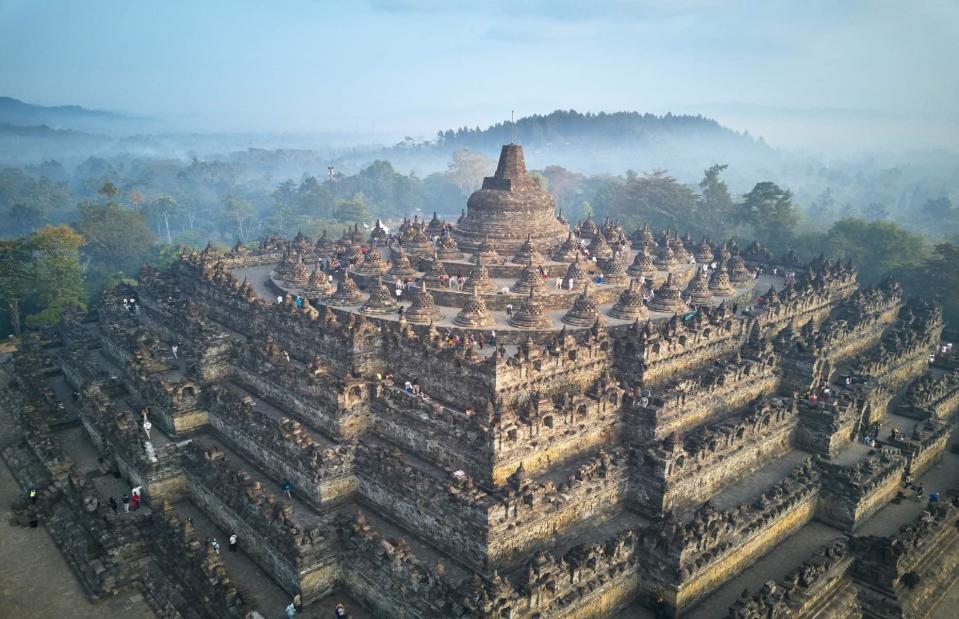
Adel Newman/Shutterstock
While the most famous pyramids were built in Giza by the ancient Egyptians, this striking architectural structure has been created by many different cultures and civilisations through history. From extremely early ancient structures hewn from solid stone to the glass-and-metal marvels of modernity, the use of pyramids goes far, far beyond Egypt's dusty deserts and verdant valleys.
From the Aztec pyramids of Mexico to sprawling temples in Indonesia, read on to discover the world's most amazing pyramids that aren't in Egypt...
Nubian pyramids, Meroe, Sudan
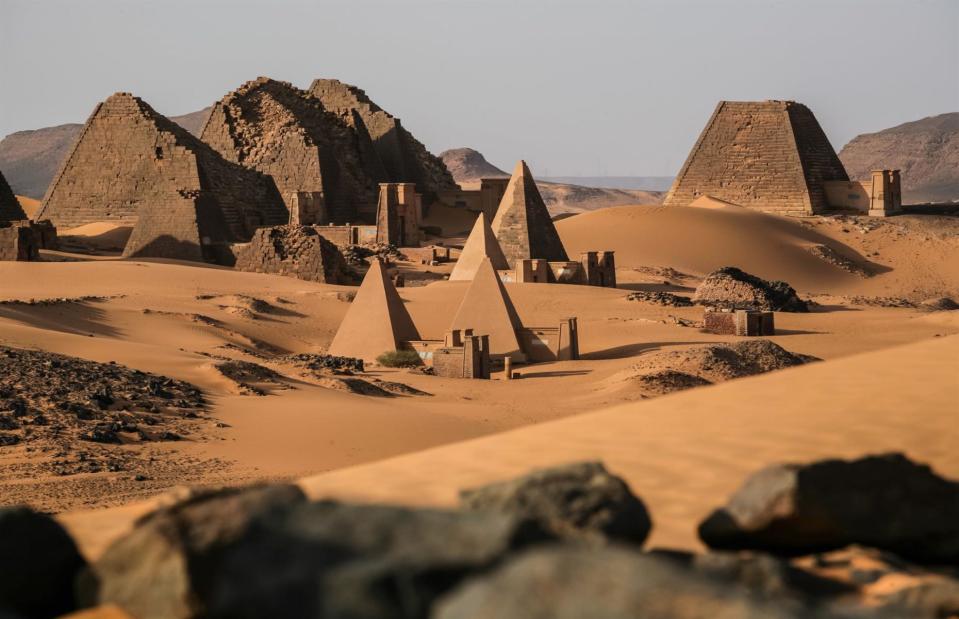
Martchan/Shutterstock
The Nubian pyramids in eastern Sudan are lesser-known (and far smaller) than the great pyramids of Giza but no less remarkable. Located some 125 miles (200km) northeast of modern-day Sudanese capital Khartoum, Meroe was the heart of the Kingdom of Kush, an ancient African kingdom, between the 8th century BC and 4th century AD. Spread across three sites (including the ancient city of Meroe), the area is home to more than 200 red-brick pyramids, built as tombs for Kushite rulers, that reach up to 100 feet (30m) tall.
Nubian pyramids, Meroe, Sudan
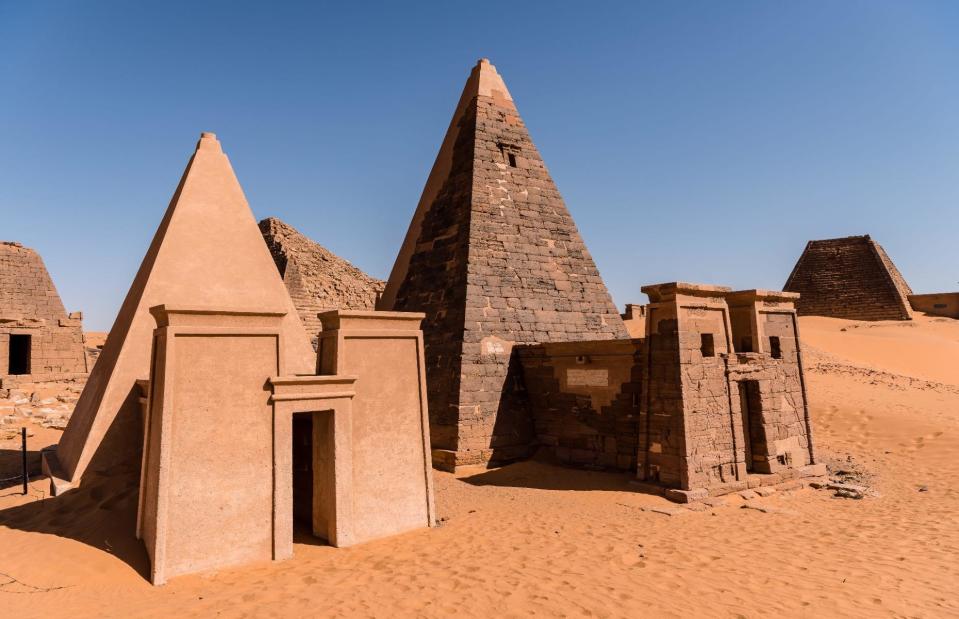
mbrand85/Shutterstock
Over the centuries, the former royal city and ancient cemetery, now an UNESCO World Heritage Site, has been plundered of its wealth and left to ruin. Some of the pyramids in particular were partially destroyed by Italian treasure hunter Giuseppe Ferlini between 1800 and 1870, and modern-day threats include drifting sands and rising Nile flood water. Some of the smaller pyramids have been restored to their former glory but even those in states of decay still look impressive.
Nubian pyramids, Jebel Barkal, Sudan
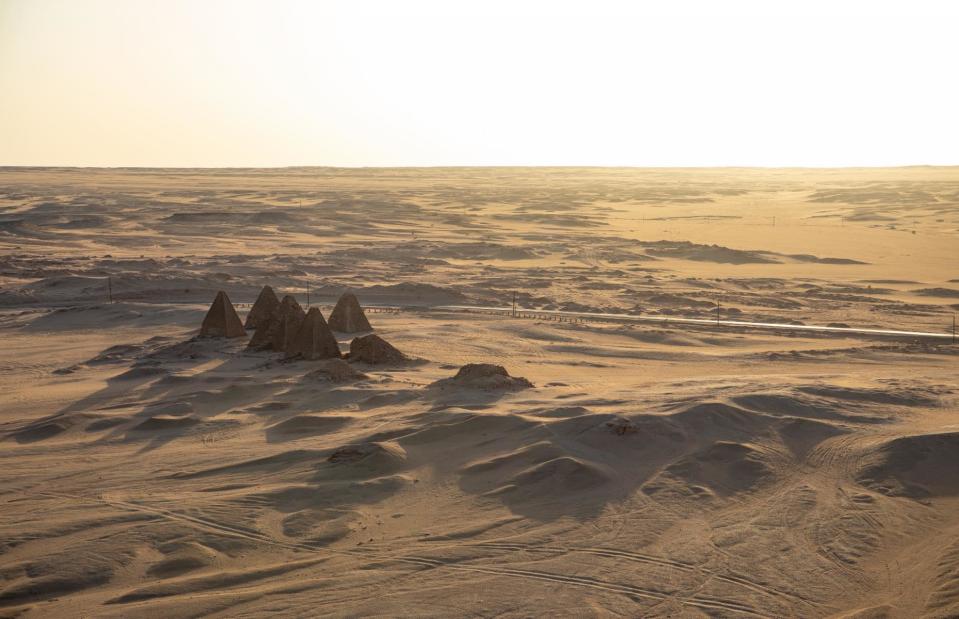
evenfh/Shutterstock
Sudan is home to more than twice the number of pyramids in Egypt, so it's not just the area and city of Meroë where you'll find amazing ancient feats of engineering. Under the rule of Alara, King of the Kush, the Kushite civilisation (also known as the Black Pharaohs) built religious structures across a vast site in the Nile Valley. One of the most impressive is the area of Jebel Barkal, where ancient Nubian temples, tombs and pyramids lie in the desert sands beyond the Nile’s lush river banks.
Nubian pyramids, Jebel Barkal, Sudan
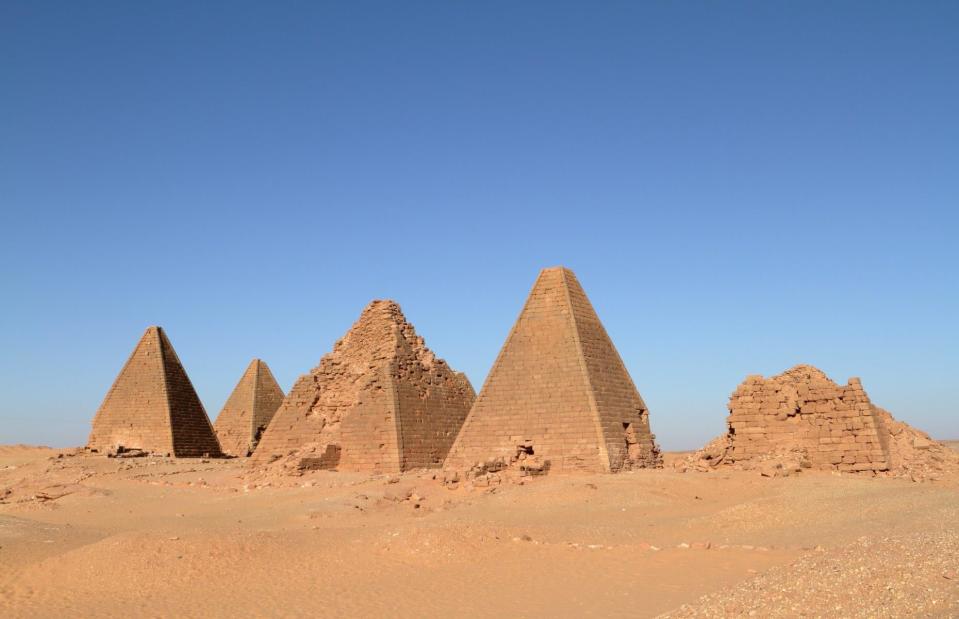
hecke61/Shutterstock
Rising above the burnt-red sands, the flat-topped Jebel Barkal mountain, or Pure Mountain, represented the home of the Egyptian god Amon and the sprawling pyramids here date back to the Meroitic era (270 BC to AD 350). This abandoned ancient site is located around 217 miles (349km) north of the modern capital of Khartoum and the various temples and tombs here, and across four other archaeological sites (El-Kurru, Nuri, Sanam and Zuma) now have UNESCO World Heritage status.
Nubian pyramids, El-Kurru, Sudan
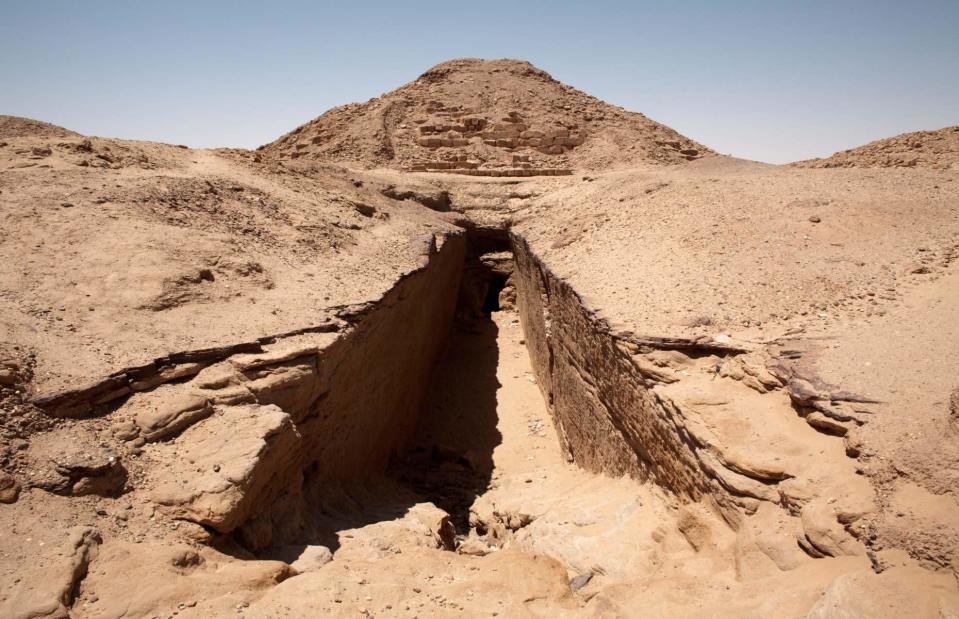
robertharding/Alamy Stock Photo
The archaeological site of El-Kurru in northern Sudan is one of the most important of ancient Nubia as its pyramid cemetery, built as a royal resting place for kings of the Napatan dynasty, is one of the best-preserved in the country. Although many of the structures were looted of their most precious objects, ancient hieroglyphic inscriptions found by American archaeologist George Reisner in the early 20th century (many depicting various animals and Kushite symbols) offered some invaluable clues about Nubia’s past.
Pyramids of the Moon and Sun, San Juan Teotihuacan, Mexico
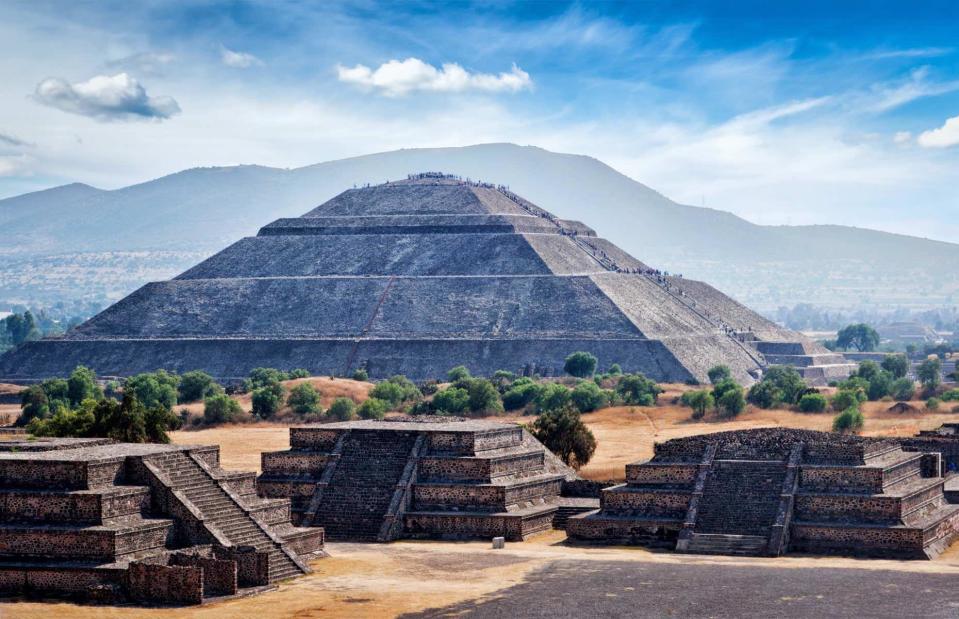
Dmitry Rukhlenko/Shutterstock
With a base of around 720 by 760 feet (220 by 230m), the Pyramid of the Sun is famed for being the world’s third-largest pyramid. While its sister temple, the Pyramid of the Moon, isn't quite so colossal (its base measures around 426 by 511 feet/130 by 156m), it's no less impressive, standing in front of the imposing Cerro Gordo mountain, which it’s said to resemble. They're both located in Mexico’s San Juan Teotihuacan, an ancient Mesoamerican citadel also known as City of the Gods.
Pyramids of the Moon and Sun, San Juan Teotihuacan, Mexico
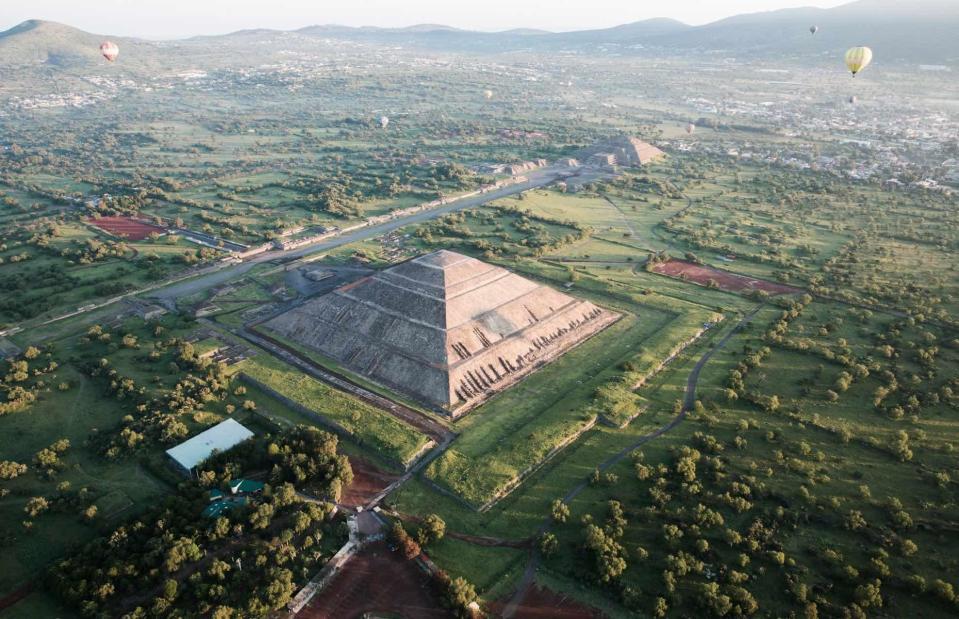
Lorena Huerta/Shutterstock
Built between AD 200 and 250 with an earth interior and volcanic rock exterior, these famous landmarks are typical of Mesoamerican pyramids. Archaeologists have found various artefacts here – from deity figures to clay pots and animal bones – and some claim the tombs could have been used for ritualistic sacrifices. Visitors to the Pyramid of the Sun can marvel at its sheer magnitude from the ground, or climb the 248 steps which lead to its pinnacle, an impressive 216-feet (66m) high. You can also climb the Pyramid of the Moon via a steep (but far shorter) stairway.
Tikal pyramids, Guatemala
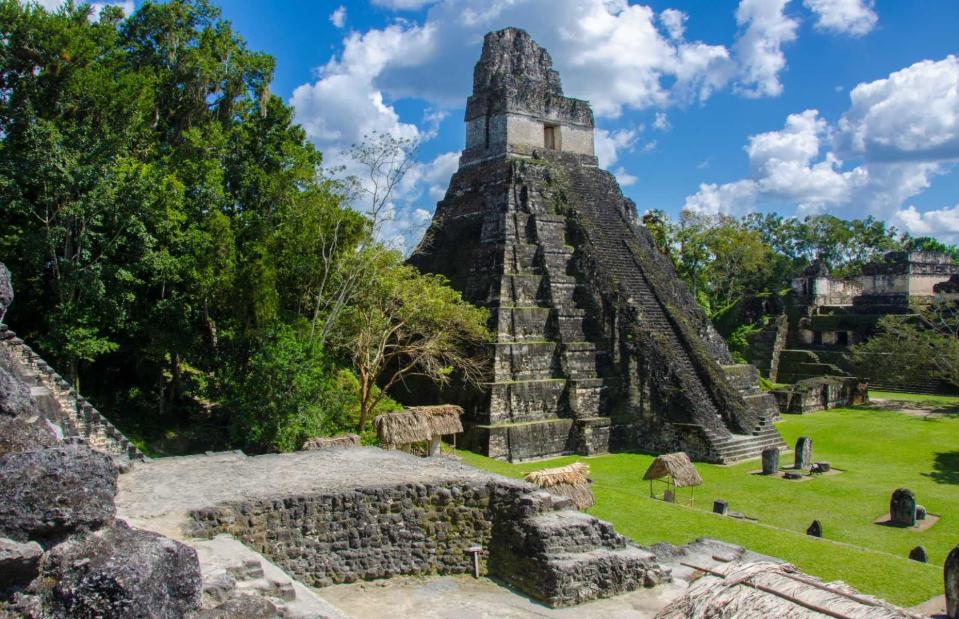
Simon Dannhauer/Shutterstock
Hidden among the Peten rainforest of northern Guatemala, the pyramids of Tikal were built between AD 300 and 900. Along with some 4,000 structures, they make up what was once the ancient Mayan city known as Yax Mutal, among the most powerful kingdoms of its time. There are six temples here in total, as well as plazas, pyramids and Mayan art and hieroglyphics. Mysteriously, the pyramids were left abandoned for eight centuries until they were discovered by explorers in the 1840s.
Tikal pyramids, Guatemala

Evgeny Drokov/Shutterstock
The tallest pyramid, Pyramid IV, is arguably the most impressive. Measuring around 213 feet (63m) from the ground to its pinnacle, many people climb to the top where the Temple of the Two-Headed Serpent still lies, offering majestic views over the rainforest. A UNESCO World Heritage Site, these otherworldly pyramids and the surrounding Tikal National Park – around 19 miles (31km) north of Lake Peten – are now among the most popular places to visit in Guatemala.
El Castillo, Chichen Itza, Mexico
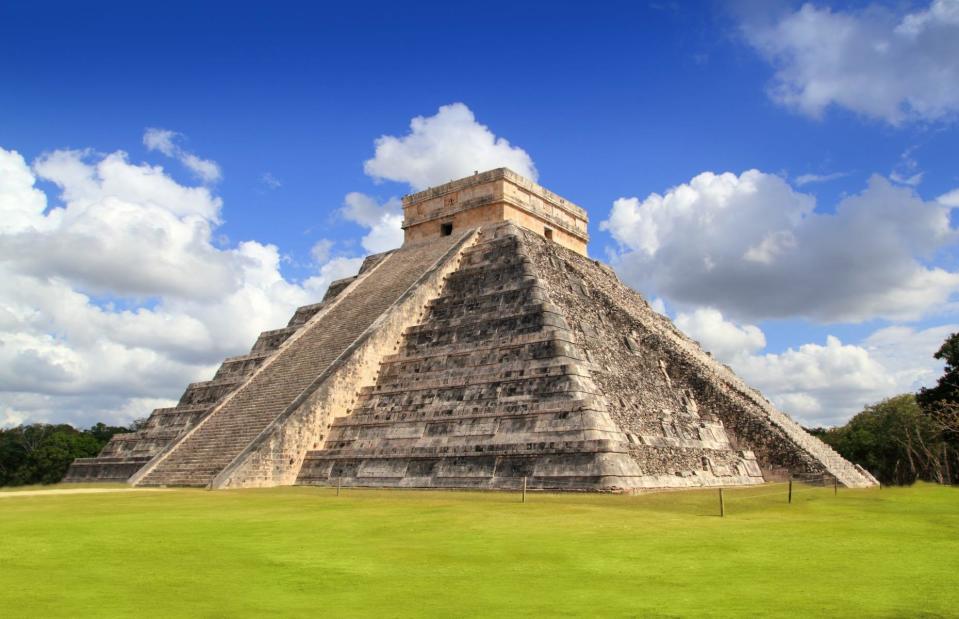
lunamarina/Shutterstock
Situated in the ancient Maya city of Chichen Itza in Mexico’s Yucatán Peninsula, El Castillo, as the Spanish conquistadors named it, is steeped in legend. This stepped pyramid was built by a late Mayan civilisation known as the Toltec people, roughly between AD 1050 and 1300. But it's also hiding a secret dating to AD 500 to 800. In addition to a second pyramid inside which had already been discovered, in 2016 archaeologists used imaging technology to reveal a third pyramid within El Castillo's walls.
El Castillo, Chichen Itza, Mexico
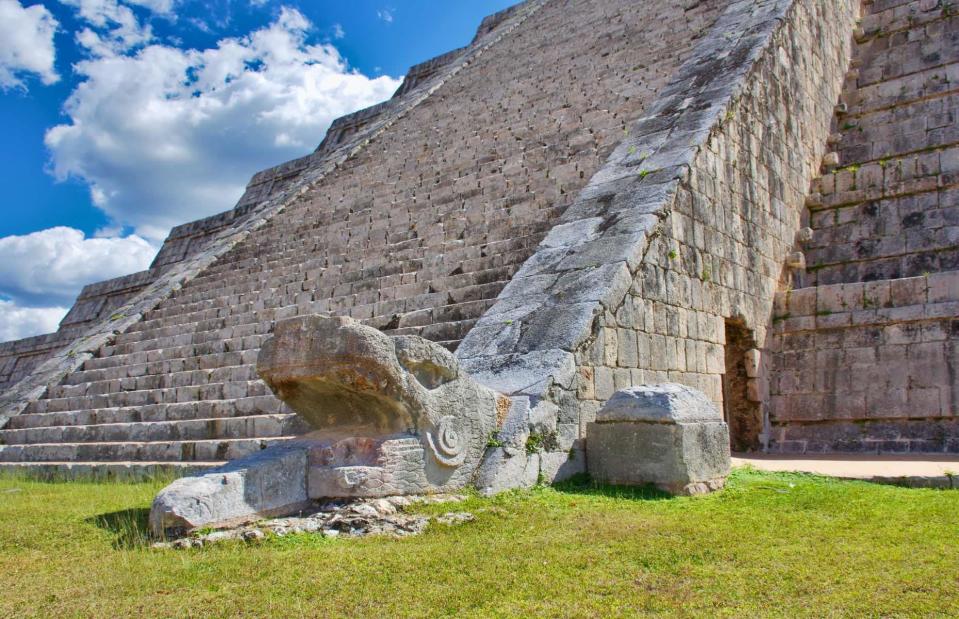
Eder Maioli/Shutterstock
Other notable features of El Castillo include the carvings of feathered serpents, representing Maya deity Kukulcan. The temple has been built in such a way that during the spring and autumn equinoxes, the setting sun creates the illusion of a snake creeping down the staircases. This incredible spectacle usually attracts thousands of visitors each year.
Ziggurat, Ur, Iraq
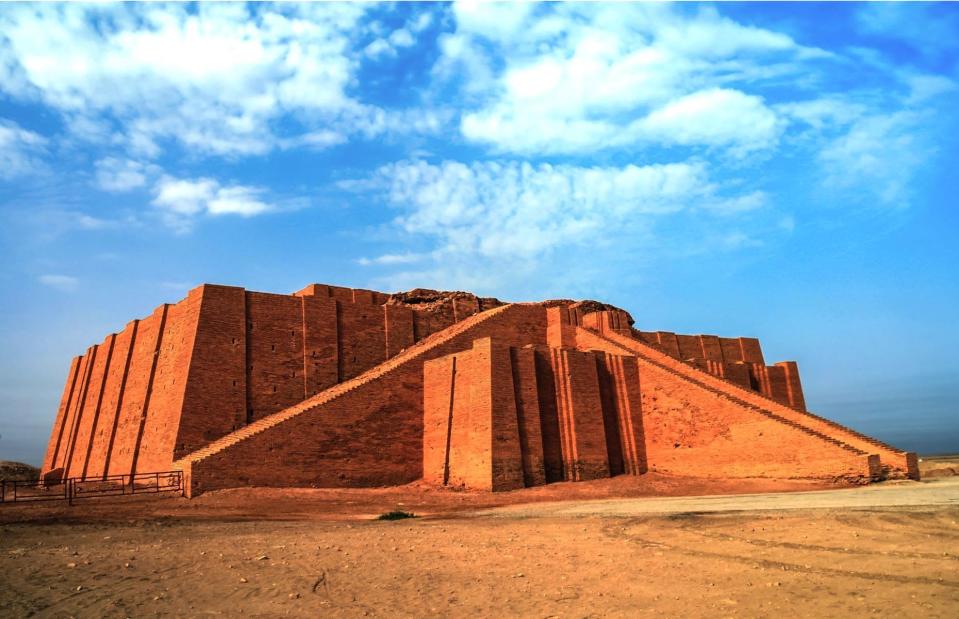
Bildagentur Zoonar GmbH/Shutterstock
Known as ziggurats, the pyramid structures of ancient Mesopotamia are distinctly different from those found in Giza, but they inspire a similar sense of awe, thanks to the architectural skill and manpower required to build them. The ziggurat in Ur (a former Sumerian city in modern-day Iraq) is the best-preserved, and impresses with its angular walls, sharp-sloped stairways and thousands upon thousands of burnt-red bricks.
Ziggurat, Ur, Iraq
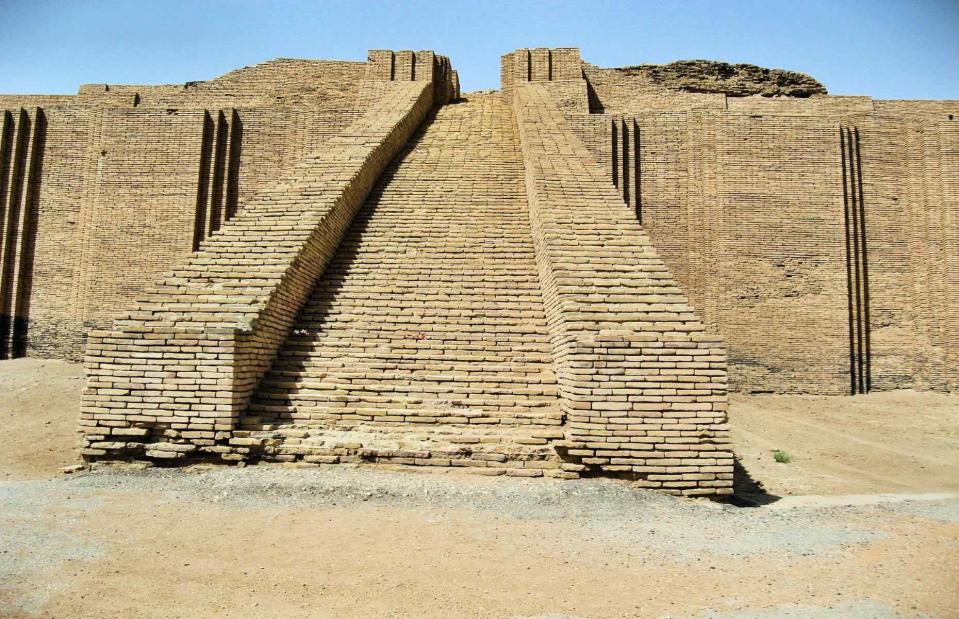
Simon Edge/Shutterstock
Measuring some 210 by 150 feet (64 by 46m) across its base, this mammoth pyramid was built around the 21st century BC during the third dynasty of Ur, under the leadership of Sumerian king Ur-Nammu and his son Shulgi. Although the peak of the pyramid has not been preserved, it’s thought it would have housed a shrine to the moon god Nanna when it was built, taking the pyramid’s height to more than 100 feet (30m).
Great Pyramid of Cholula, Puebla, Mexico
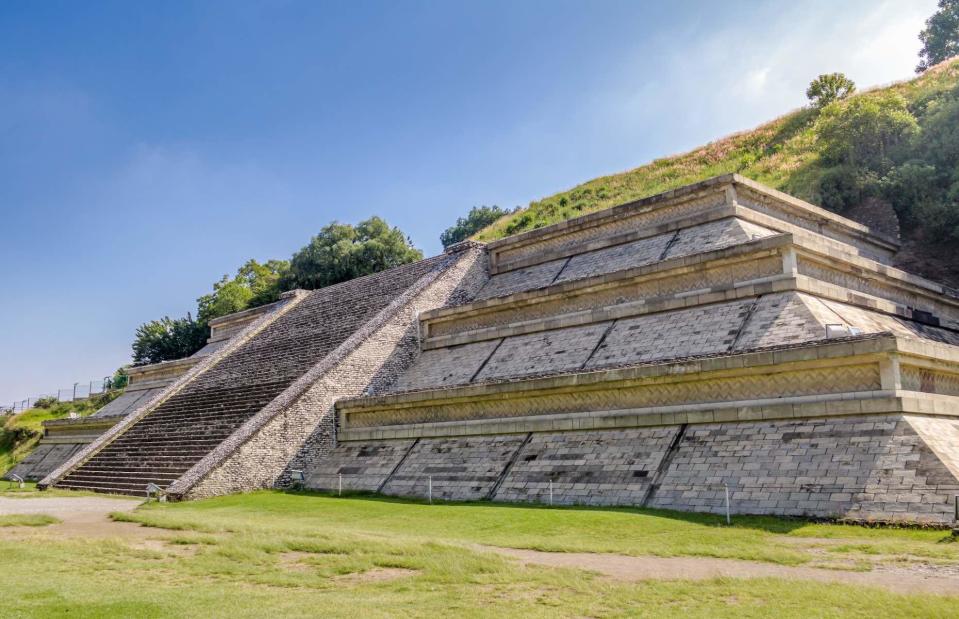
Diego Grandi/Shutterstock
If you’ve ever wondered whether there’s a pyramid larger than the Great Pyramid of Giza, the answer is yes. Commonly mistaken for a hill, the earth and tree-covered mound found in the ancient city of Cholula is actually a mammoth pyramid. Construction started around 200 BC, and the building was perhaps meant to resemble the incredible Popocatepetl volcano which sits behind it. At 1,476 feet wide (450m) and 216 feet tall (66m), this epic structure is the largest pyramid on Earth. It dwarfs its Egyptian counterpart with nearly twice the volume.
Great Pyramid of Cholula, Puebla, Mexico
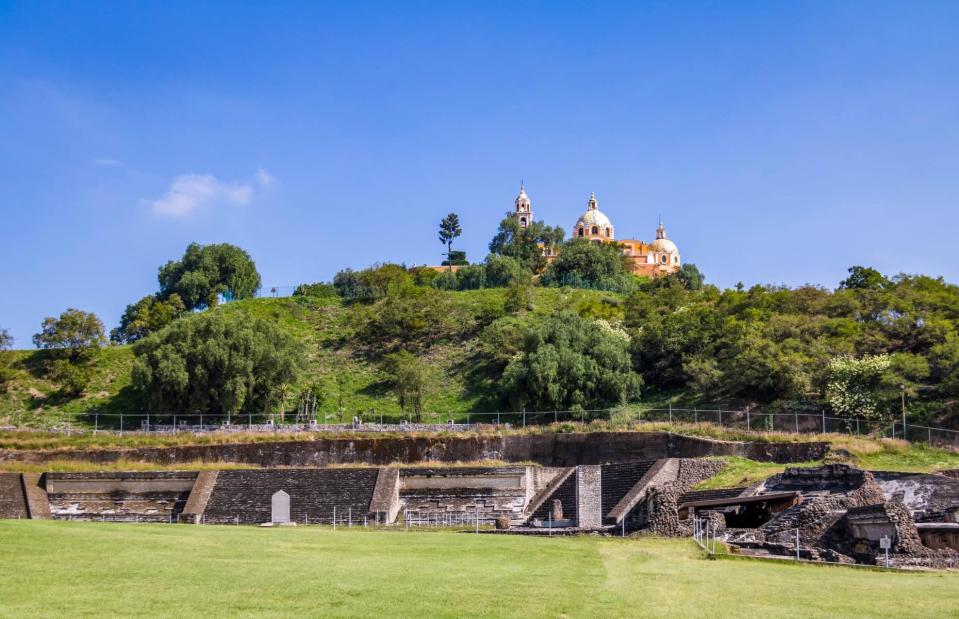
Diego Grandi/Shutterstock
While this ancient pyramid has been altered by various civilisations, the most obvious addition is the church which sits at its summit. Following a bloody invasion by the Spanish in 1519 when some 3,000 of the sacred city’s inhabitants were killed, the colonists built Iglesia de Nuestra Senora de los Remedios upon the great mound. We don’t know for sure if they knew it was a mammoth pyramid containing tunnels, stairways, platforms and altars. Today, this UNESCO-listed monument, also known as Tlachihualtepetl, typically attracts thousands of visitors.
Temple of the Inscriptions, Palenque, Mexico
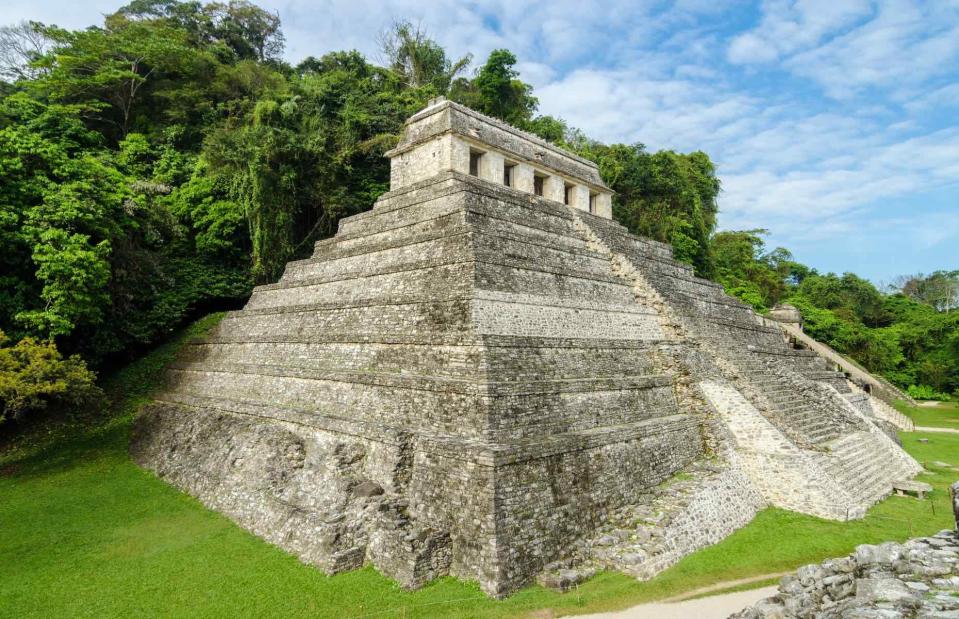
Jess Kraft/Shutterstock
Built in the 7th century to house a tomb for the Mayan king K'inich Janaab Pakal, the Temple of the Inscriptions in southern Mexico is one of the most impressive sites of Mesoamerica. At around 65 feet high (20m), it’s the largest Mesoamerican stepped pyramid in ancient Palenque and, as its name suggests, is known for its extensive hieroglyphic inscriptions. Once the home of royal ceremonies, funerals and religious rituals, archaeologists have found everything from jade ornaments to a stone crypt here.
Temple of the Inscriptions, Palenque, Mexico
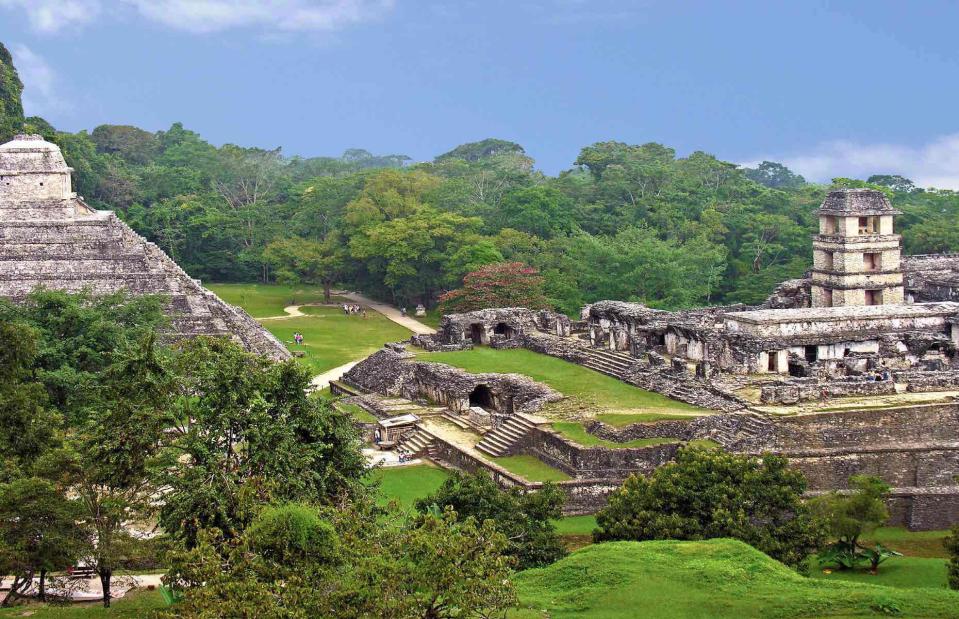
Dennis Jarvis/Flickr/CC BY-SA 2.0
One of the most recent discoveries was an underground canal beneath the pyramid. It's thought the waterway, discovered using sonar technology, may have been built before the temple and the pyramid was purposefully constructed on top, to give Pakal's spirit a path to the afterlife. The site in Palenque features an array of ruined temples spread across a palatial complex. Alongside Tikal and Calakmul, it represents one of the most powerful Mayan cities in history.
Pyramids of Guimar, Tenerife, Canary Islands, Spain
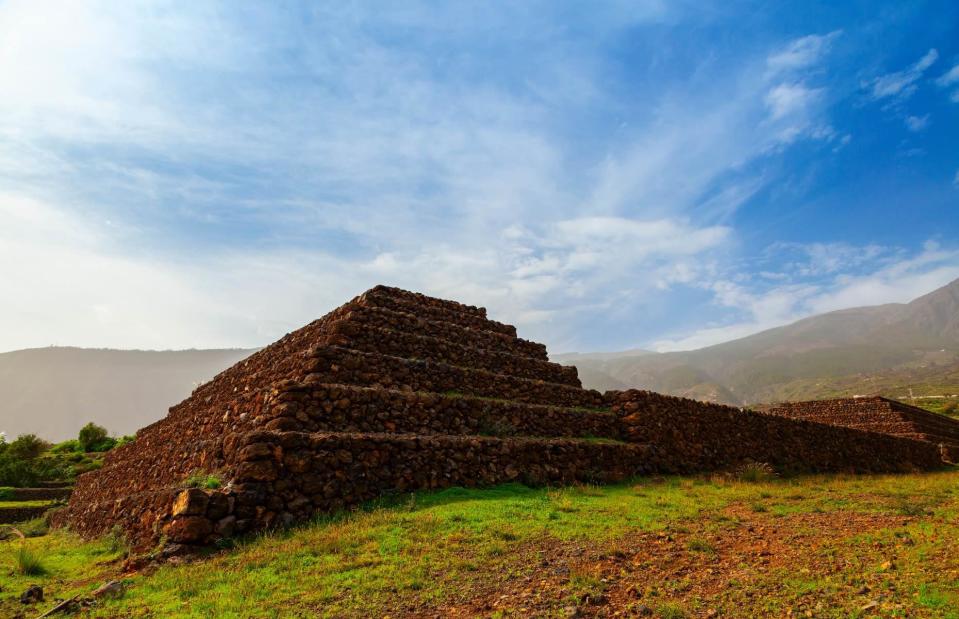
lorenzobovi/Shutterstock
The jury is still out over the origins of these six mysterious pyramids in the Spanish Canary Islands. Away from the popular resorts on Tenerife’s south coast, these lava stone structures in the village of Guimar in the north of the island have many signs of antiquity (like west-facing stairways and astronomical positioning to the summer and winter solstices). Some claim the Indigenous people of Tenerife could have built them well before Spanish colonisation, but others say they were merely left behind by farmers. Whatever the truth, these curious pyramids are well worth the trip.
Prasat Prang, Koh Ker, Cambodia
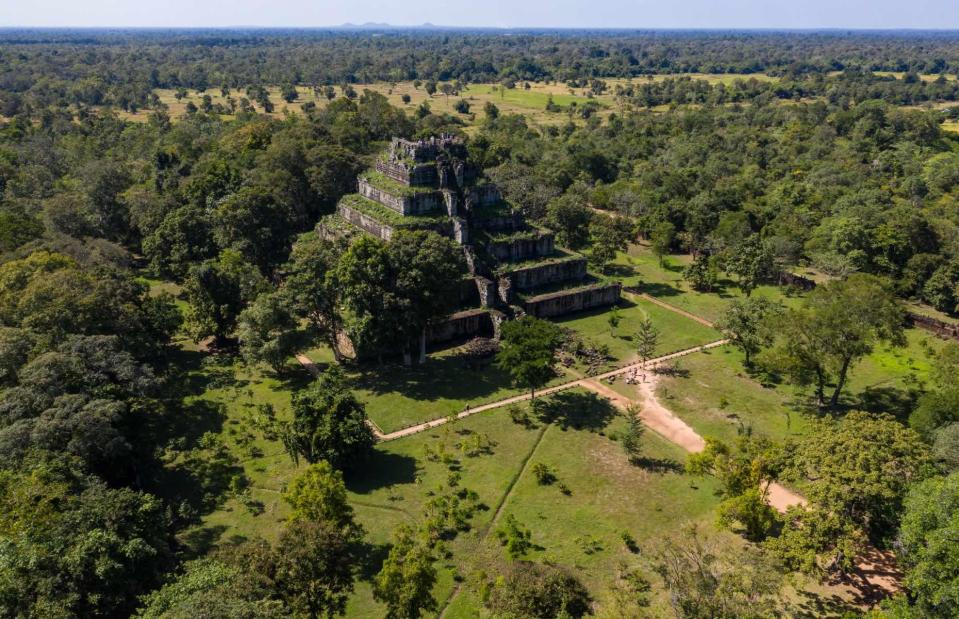
Nhut Minh Ho/Shutterstock
Located around 53 miles (85km) northeast of world-famous Angkor Wat, the ancient city of Koh Ker was built by the Khmer empire in the 10th century. A sprawling complex, this otherworldly, timeworn site has gradually become consumed by the jungle, earning it the nickname ‘the forgotten city’. But this former home of Angkorian kings (and former capital of the Khmer empire) is actually the second-largest temple town in the country. And its seven-tiered pyramid known as Prasat Prang is among the most impressive structures.
Prasat Prang, Koh Ker, Cambodia
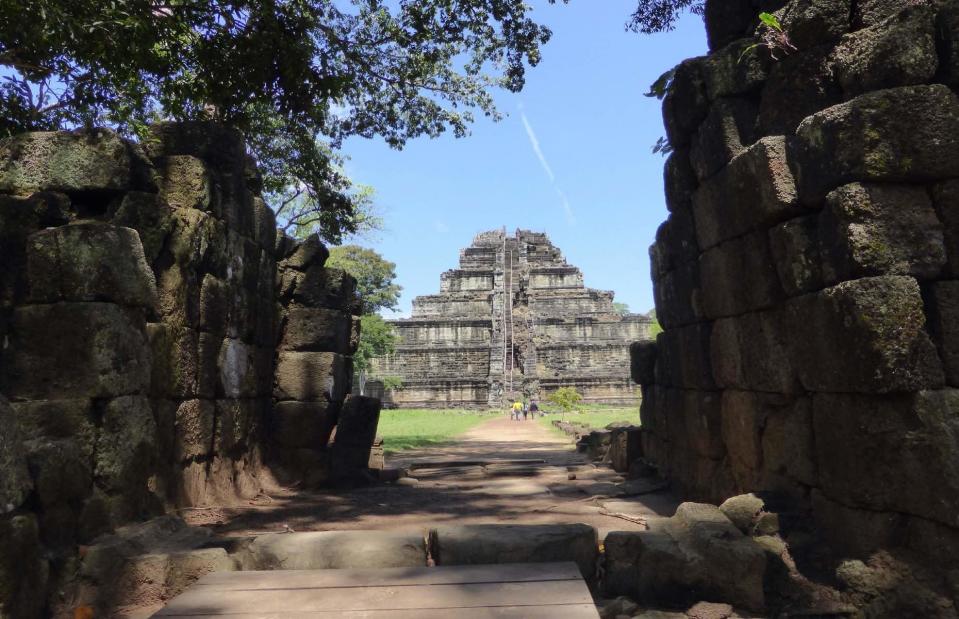
Bryn Pinzgauer/Flickr/CC BY 2.0
Rising 118 feet (36m), the sandstone pyramid, built for worshipping Hindu gods, is part of an impressive temple site known as Prasat Thom. If you’re not put off by heights, it's possible to climb to the top of the pyramid via some wooden steps which have been added for visitors, and enjoy 360-degree views over the jungle.
Sacred City of Caral-Supe, Caral, Peru
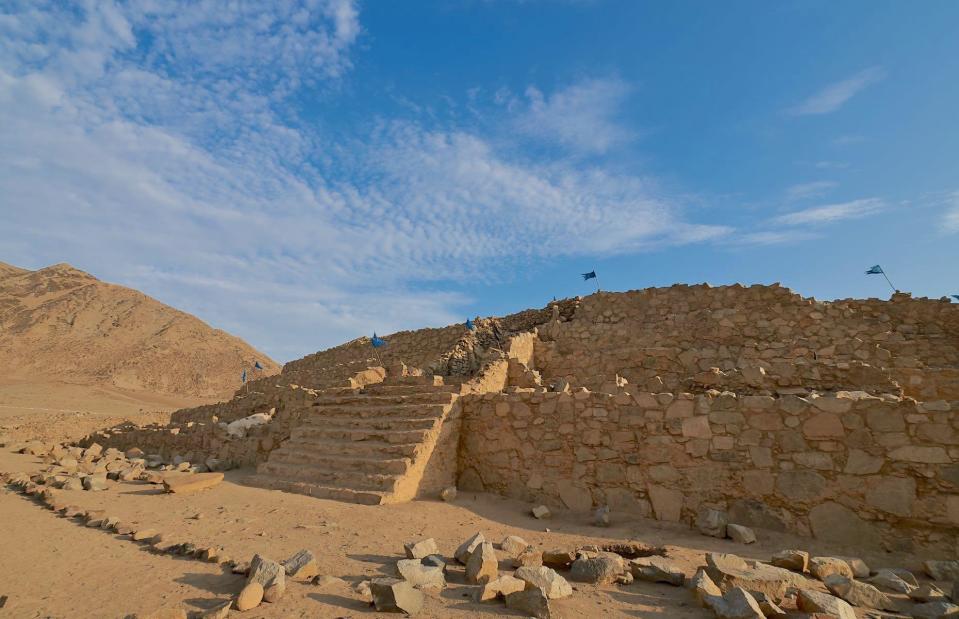
Cesar Alcedo/Shutterstock
The Sacred City of Caral-Supe represents the oldest remnants of civilisation in the Americas, well before the Incan empire was established. Dating back to around 2000 BC, the settlement and its six pyramids were inhabited by the Norte Chico people and it may have been used several thousand years on, perhaps up to AD 1440. The step-style pyramids, made from earth and stone, sit on top of a dry ridge overlooking the Supe river valley and the largest pyramid, known as Pyramide Mayor, has a base of around 450 by 500 feet (137 by 152m).
Sacred City of Caral-Supe, Caral, Peru
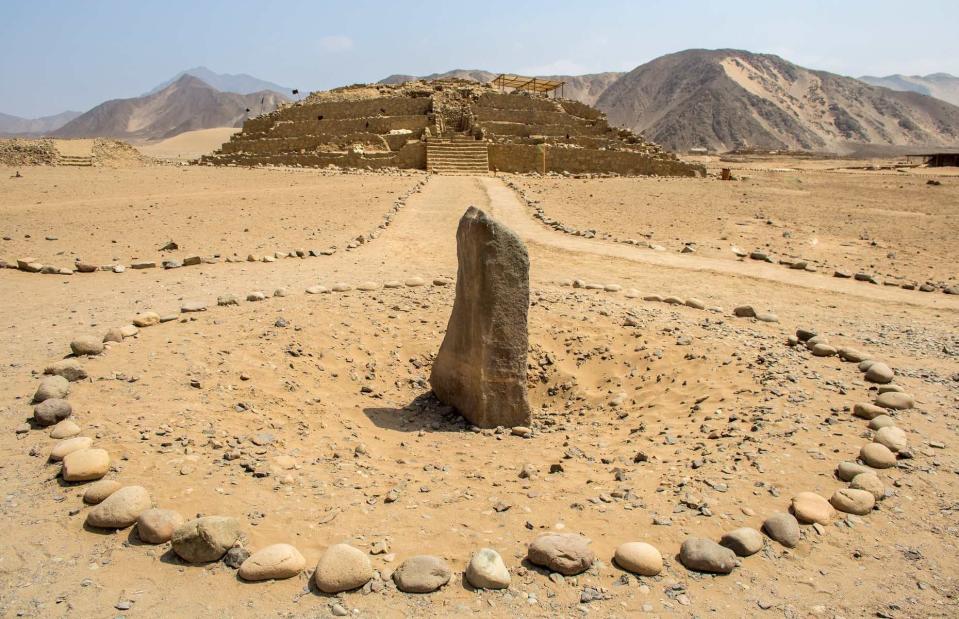
Jon Gudorf Photography/Flickr/CC BY-SA 2.0
Archaeologists have suggested that Pyramide Mayor's size and location – over the main plaza and with views across the ancient city and beyond – implies it was the most important public building in Caral-Supe. Other pyramids have also given clues about the society who once lived here. The Gallery Pyramid, for example, stored quipu – lengths of string with knots, believed to be a way of storing information. Beyond the pyramids, there's also a complex of circular courts, ceremonial structures and other platform mounds across an area of more than 148 acres.
Mausoleum of the First Qin Emperor, Xi'an, Shaanxi Province, China
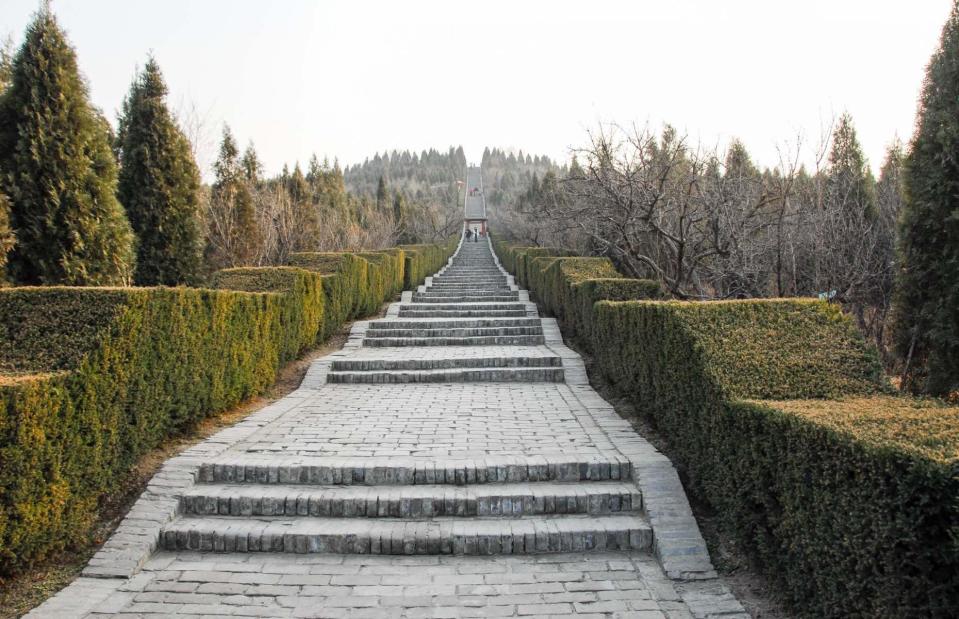
Tatsuo Nakamura/Shutterstock
There’s a lot of secrecy surrounding the ancient pyramids of China. Although many of them resemble mounds more than the typical pointed pyramid, experts claim they were built in a similar way to those left by Egyptian pharaohs. Situated in the capital of Shaanxi Province, the mausoleum of the first Chinese emperor, Qin Shi Huangdi, is one such structure. Built between 246 and 208 BC, it reaches a height of nearly 250 feet (76m) and is considered one of the most fascinating pyramids in the world. It's also the site of the world-famous Terracotta Army.
Borobudur, Java, Indonesia
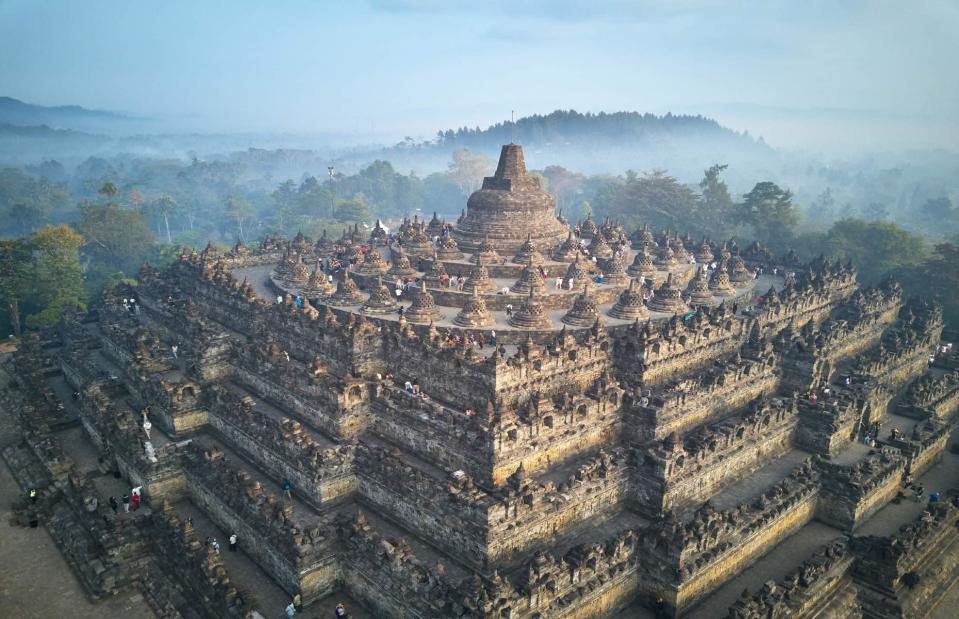
Adel Newman/Shutterstock
Comprising 72 stupas, five large square terraces and 504 statues of Buddha, Borobudur is one of the world’s most celebrated Buddhist monuments. This tiered pyramidal-esque structure, located near Muntilan in central Java, was built between AD 778 and 850 using volcanic stone. Its mammoth dimensions make an instant impression, but it's the incredibly intricate details like religious carvings which depict Buddhist stories that make it a sight to behold.
Borobudur, Java, Indonesia
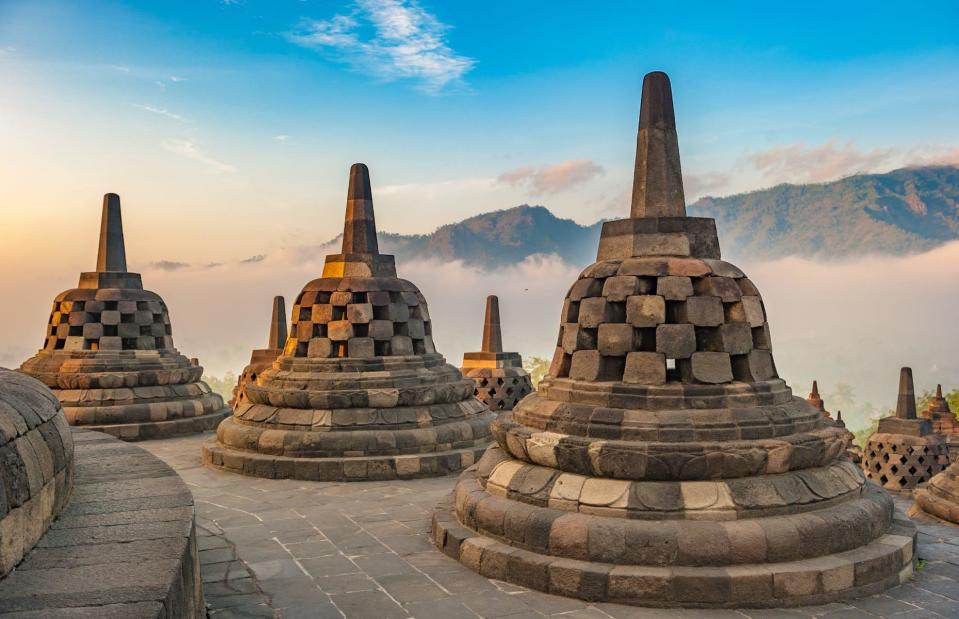
javarman/Shutterstock
Bizarrely, this magnificent temple was abandoned until it was found under a pile of volcanic ash and vegetation in the early 19th century, and an eight-year restoration took place over a century later in the 1970s and 80s. The monument gained UNESCO World Heritage Status in 1991, and today this pyramid in the Kedu Valley is the most-visited site in Indonesia. Buddhist monks can still be seen making pilgrimages to Borobudur and each of the temple’s three levels is believed to represent a stage on the journey to enlightenment.
Pyramid of Hellinikon, Argos, Greece
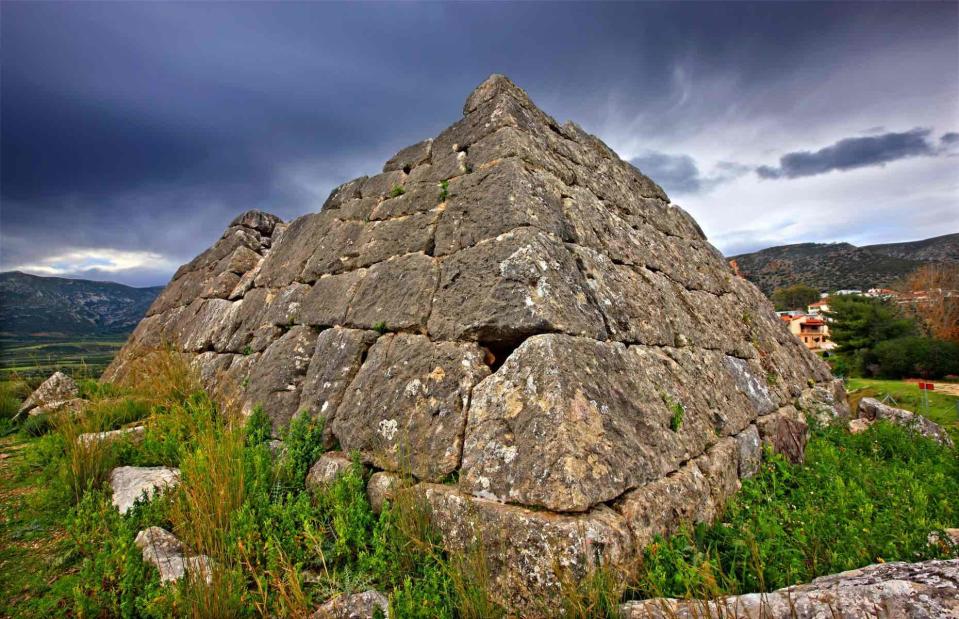
Heracles Kritikos/Shutterstock
Perched in the mountain village of Elliniko, the Pyramids of Argolis are some of the most famous pyramidal landmarks in Greece, with Hellinikon being the best-preserved of them all. Situated on an ancient road that once linked Argos and Tegea, this area in the eastern Peloponnese is known for its ancient Greek relics. Although a lot of mystery remains around the pyramids’ origins, we do know they existed around the 2nd century AD when the geographer Pausanias discovered them.
Pyramid of Cestius, Rome, Italy
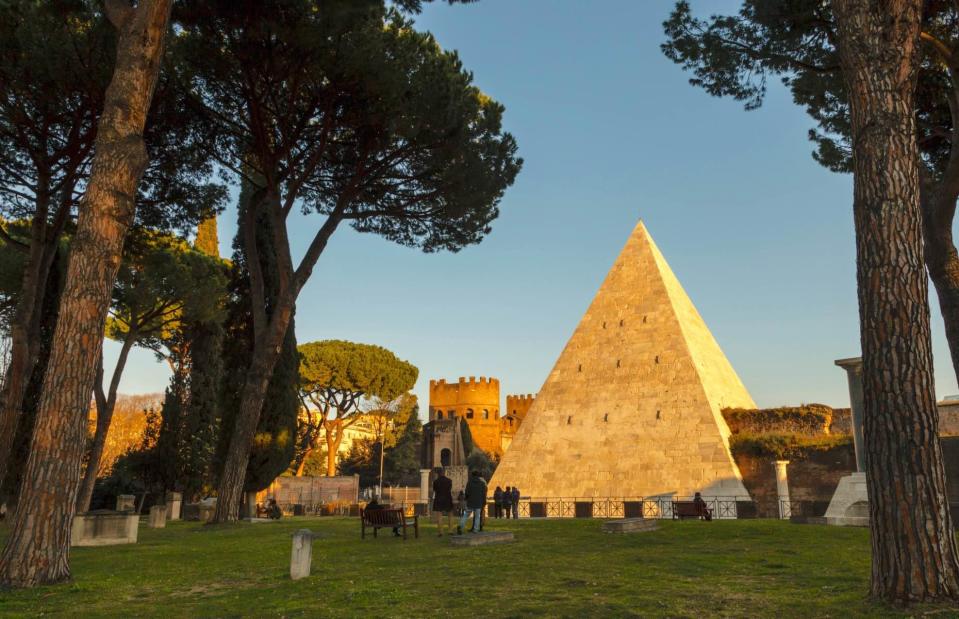
Graham Hardy/Shutterstock
Thanks to its brilliant white stone, many visitors think the Pyramid of Cestius is a modern-day structure. But this ancient tomb, built for the Roman magistrate Gaius Cestius, dates back some 2,000 years to around 18 to 12 BC, during the reign of the first Roman emperor, Caesar Augustus. Separating the districts of Ostiense and Testaccio, the pyramidal monument was originally built outside the Roman metropolis before it grew larger. The Aurelian Walls, which flank the pyramid, were later added to defend the city between AD 271 and 275.
Pyramid of Cestius, Rome, Italy
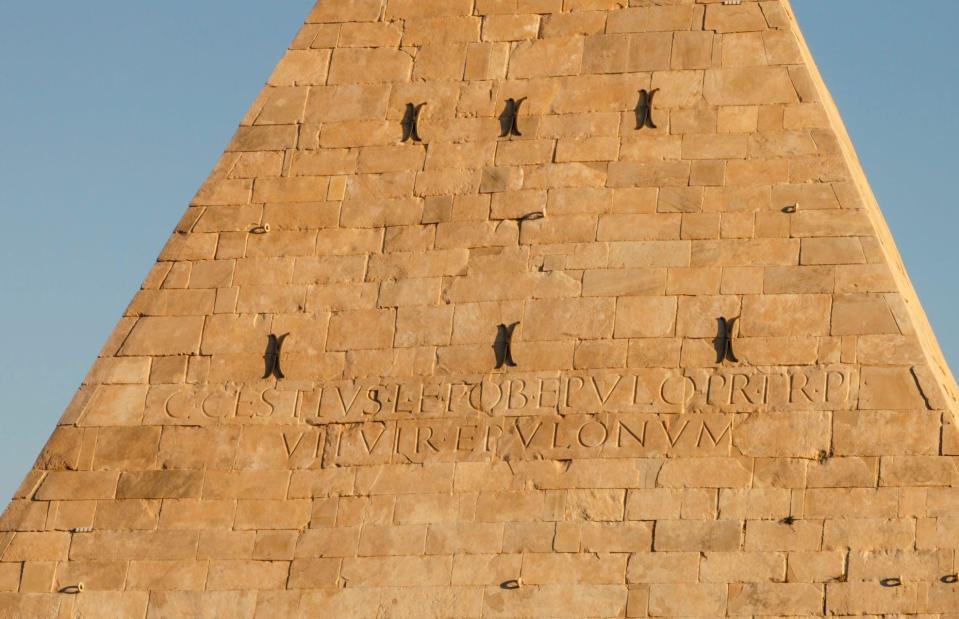
Graham Hardy/Shutterstock
The Pyramid of Cestius is the only one out of four pyramids that has remained intact in the Italian capital, and many historians liken it to the ones found in ancient Nubia. Thanks to a restoration in 2016 – which turned its timeworn Carrara marble from a dirty grey to a creamy white – it has re-emerged as a popular tourist attraction. The Non-Catholic Cemetery (Cimitero Acattolico di Roma) which surrounds the pyramid is also worth a visit to see the graves of famous leaders, poets and writers.
Louvre, Paris, France
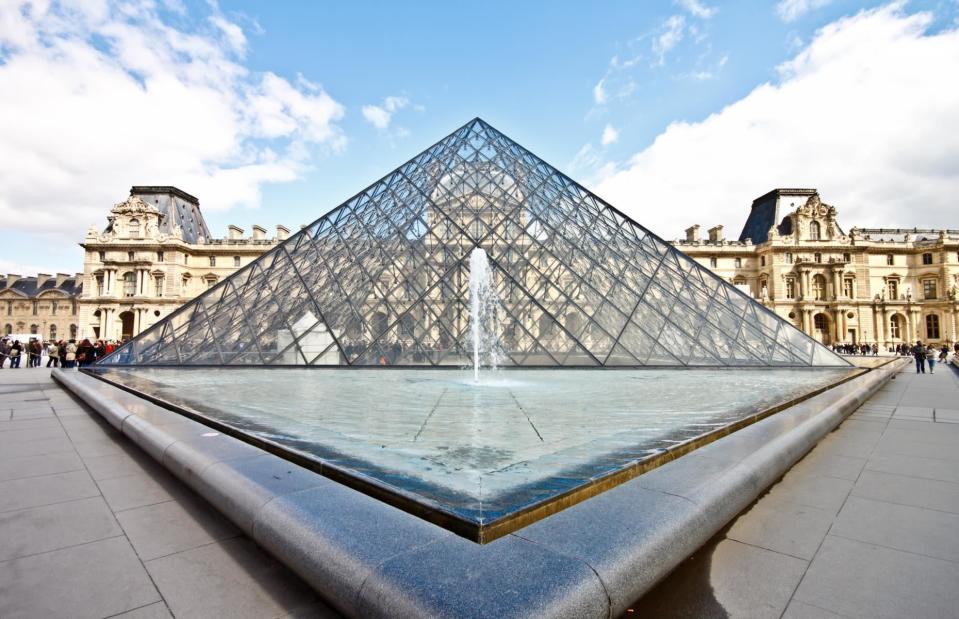
nui7711/Shutterstock
Housing almost a million pieces of art from around the world and, of course, Leonardo da Vinci’s Mona Lisa, the Louvre in Paris is world-famous. A former fortress and royal residence, the original Baroque structure dates back to the 16th century, but the magnificent glass pyramid was added in the 1980s and 90s. Designed by Chinese-American architect IM Pei, the steel and glass pyramid was controversial at the time, but there’s no doubt it provides an intriguing juxtaposition to the ornate palace. Today, almost 10 million people typically visit the Louvre each year.
Luxor Hotel & Casino, Las Vegas, Nevada, USA
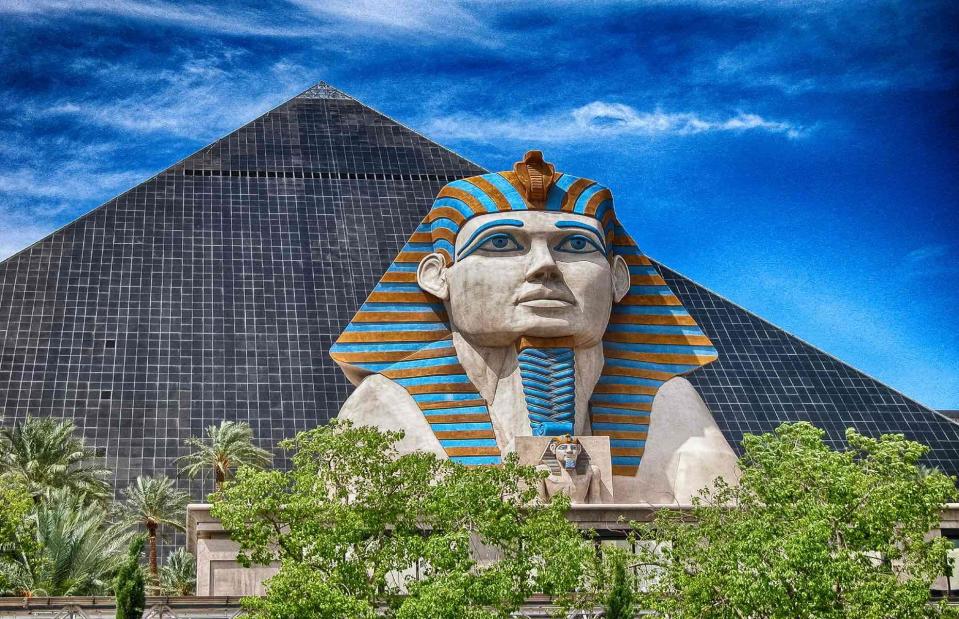
GagliardiPhotography/Shutterstock
It's definitely not as old as the Egyptian or Mayan structures, but this modern take on the original Giza pyramids in Vegas is almost as famous. Standing majestically beside the famed Strip, this 30-storey casino and hotel, designed by Veldon Simpson and built in 1993, was named after the Egyptian city of Luxor. Among the various Egyptian-inspired statues and antiquities that fill the hotel, the replica of the Sphinx of Giza in front of the black mirrored pyramid is perhaps the most jaw-dropping. A laser-like light shines from the pyramid’s peak each night.
These are the world's most incredible sculptures and statues


